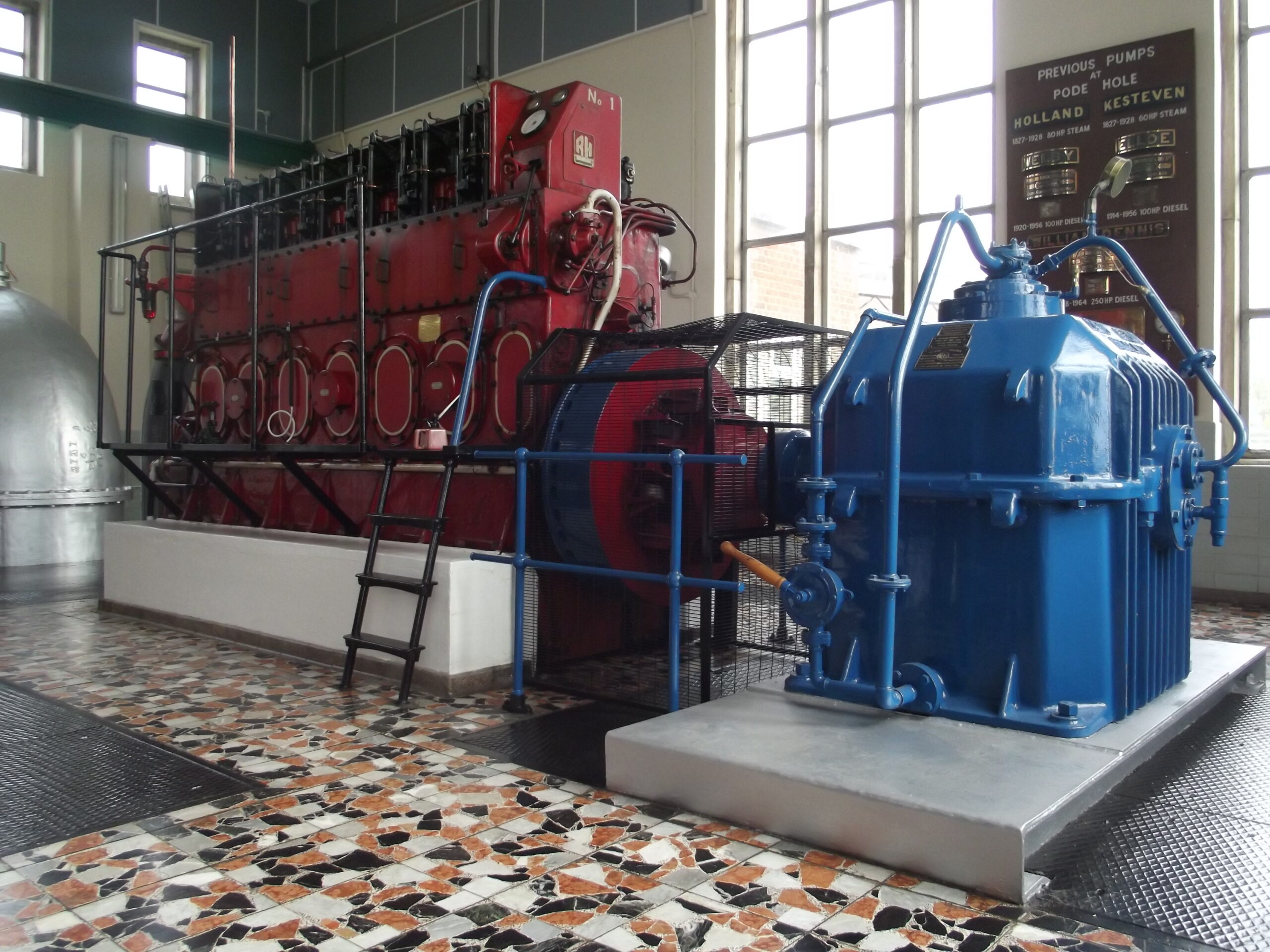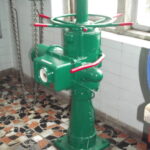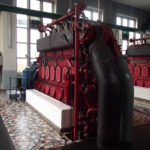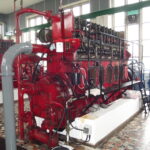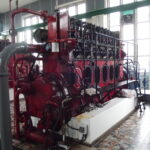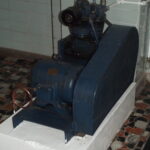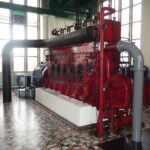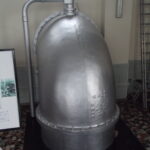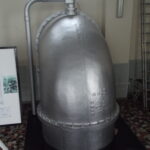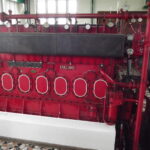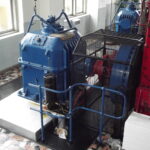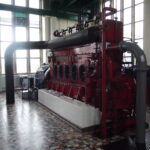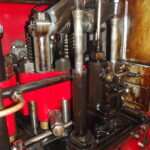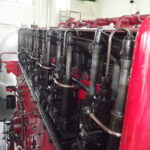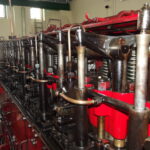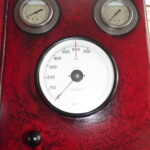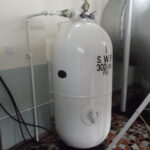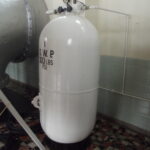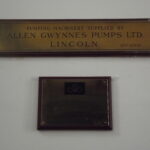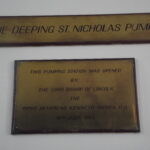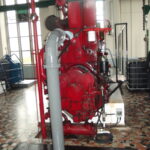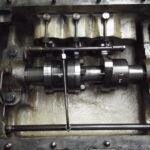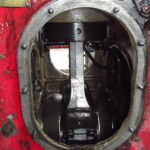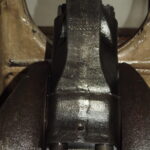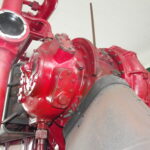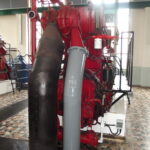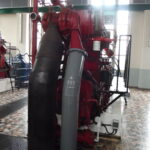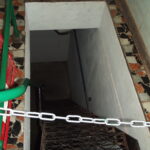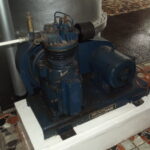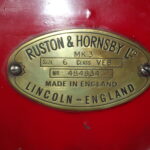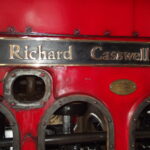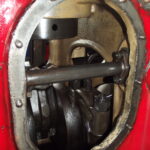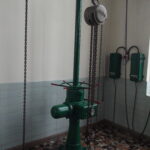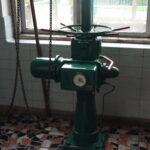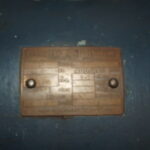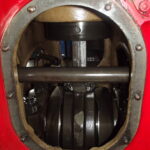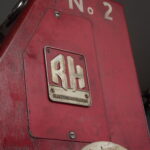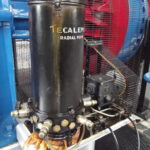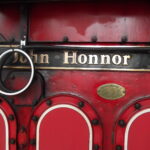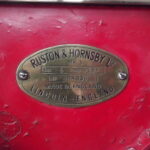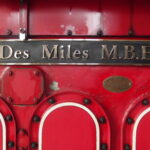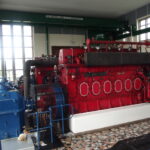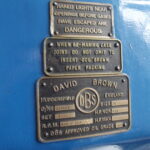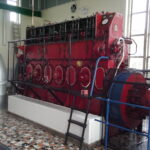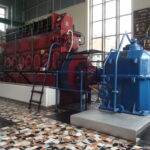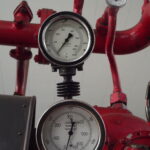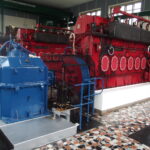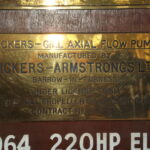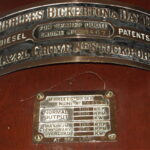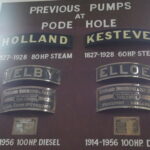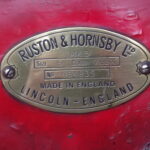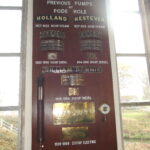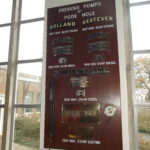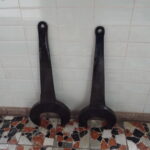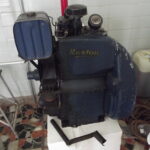As was seen in the recent article about Lade Bank Pumping Station, there are still sites around the UK which house old engines which are still in operational use. One such station I had known about for many years was Pode Hole pumping station.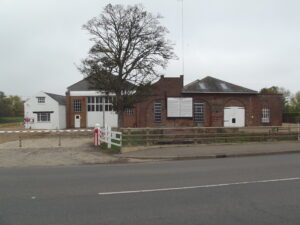
The original pump house at Pode Hole.
Pode Hole is located a couple of miles to the east of Spalding, in Lincolnshire where several drains converge into Vernat’s Drain and from there, the River Welland, which in turn runs into the Wash. The area drained by Pode Hole is known as Deeping Fen and is made up of over 34,000 acres of land. By 1815 it is believed that there were some 50 wind powered pumps assisting with land drainage in the Fen and in 1820 the need for steam power to assist with the pumping at the Pode Hole site was identified. It was estimated that the cost of purchasing and installing a pair of engines at Pode Hole would be £12,500. Work started on the steam engine station in 1824 and was completed 3 years later. Two beam engines were installed, one rated 80hp and named Holland, which was built by The Butterley Company of Ripley and was very similar to the engine now preserved at Pinchbeck engine museum. The second engine was named Kesteven and was slightly smaller, producing 60hp. This engine was made by Fenton, Murray & Wood of Leeds. Both engines drove scoop wheels measuring an impressive 28ft diameter. These were later upgraded in 1891 to wheels measuring 31ft diameter.
Further pumping capacity was installed at the site in 1914, when the internal combustion was introduced to the station. This came in the form of a Mirlees blast injection diesel engine rated at 100hp, which drove a Gwynnes 36” centrifugal pump at a speed of 240rpm, which allowed a pumping capacity of 120cusecs. This engine was known as the Elloe engine and it was joined by a similar Mirlees/Gynnes combination in 1920, which was christened the Welby engine. The addition of the Elloe & Welby engines, increased the pumping capacity at the station substantially and at the time, meant that the station had more capacity than any other station on the Fens.
By the late 1920’s, the Holland & Kesteven beam engines, were nearing the end of their working life and they both ran for the last time on 26th January 1928 as the boiler was considered to be beyond economic repair. As a result they were laid up and replaced by yet another Mirlees blast injection diesel. Unlike the existing two Mirlees engines, this example was a 5 cylinder version, producing 250hp, and was coupled to a Vickers-Gill, axial flow pump, which could discharge an impressive 156cusecs (approximately 260 tonnes of water per minute). This engine ran for the first time on 1st October 1928. A similar Mirlees is currently preserved in running order in its original pump house and forms the centrepiece of the Prickwillow Drainage Engine Museum, near Ely.
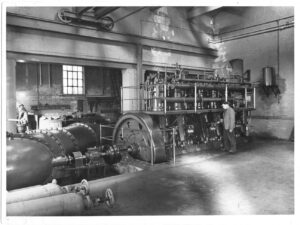
The William Dennis engine (A Mirlees blast injection diesel)
In 1940 another pump was added to the station. Unlike the previous pumps this example (known as the Henry Bain pump) was powered by an electric Motor, manufactured by Metrpolitan Vickers and rated at 220hp. The motor drove a Vickers Gill axial flow pump and added a further 132 cusecs of capacity to the station.
Major change happened at the site in 1956/1957 when due to the water level dropping, the Elloe & Welby pumps were removed as they were unable to pump at the lower water level. At the same time a new building was constructed across the road from the original pump house, and this was to become the home for the latest set of pumps at the site. These pumps were again electric pumps and were named the Adventurer’s Pumps. These again featured Gwynnes axial flow pumps, one at 39” diameter & the other at 30”. These were in turn powered by 185hp & 100hp Crompton-Parkinson motors. These pumps remain on site and are still the main pumping capacity at the station.
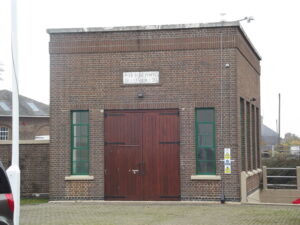
The new electric station opened in the 1956
The story of the station doesn’t end there however. The main reason for our visit to Pode Hole was the see the newest building on the site, or more accurately the contents of this building. In 1964 the William Dennis & the Henry Bain pumps were decommissioned and pumping activities in the original pump house finally ceased after an impressive 140 years of service. The need for increased capacity, plus the introduction of pumping on the adjacent Counter Drain, led to the erection of a large new pump house. This station is populated by 3 pumps. Unlike the Adventurers pumps, these new pumps featured diesel engines, made by Ruston & Hornsby of Lincoln. There are a pair of 6VEBX engines (Named Des Miles M.B.E. & John Honnor) and a single 6VEB (Named Richard Casswell). This new station was completed in 1964, but was not officially opened until 1965.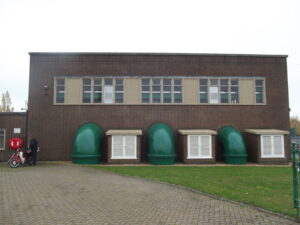
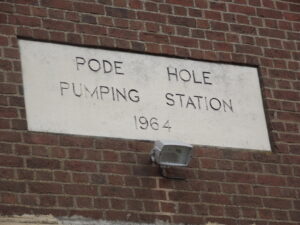
The new diesel house opened in 1964
The pair of 6VEBX engines are each rated at 650hp and power a Gwynnes 60” diameter axial flow pump each. The pumps are driven from the engines via David Brown gear boxes. The Ruston 6VEB engine again has a David Brown gear box and Gwynnes axial flow pump. This engine produces 410hp and the pump is only 50” diameter. The additional 1710 hp provided an additional 351cusecs of pumping capacity at Pode Hole. These pumps are still on the site and are still maintained and used, though the main pumping work is still done by the electric powered Adventurers pumps. During our visit the Ruston 6VEB was partially stripped and undergoing routine maintenance which allowed for some interesting pictures. The pair of 6VEBX engines on the other hand were ready and waiting to be called into service, should the water level require.
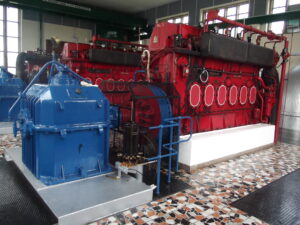
A view inside the diesel house, showing the three Ruston & Hornsby engines
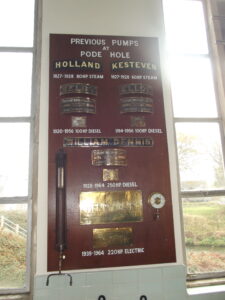
Some of the plates from the previous pumps/engines at the site
The drainage board are rightly proud of their heritage and name plates, spec plates and other features from past engines at the site have been kept and are now lovingly displayed inside the current diesel house. On top of this, several smaller pumping engines from other stations in the drainage board’s area are kept across the road in the original pump house whilst further exhibits and old pumps are on display a few miles away at Pinchbeck Engine Museum, which is also owned by the drainage board. As well as exhibits from other stations, Pinchbeck also features its original Butterley Beam engine which is believed to be similar to the 1824 Holland engine which worked at Pode Hole.
You must be logged in to like this post.

